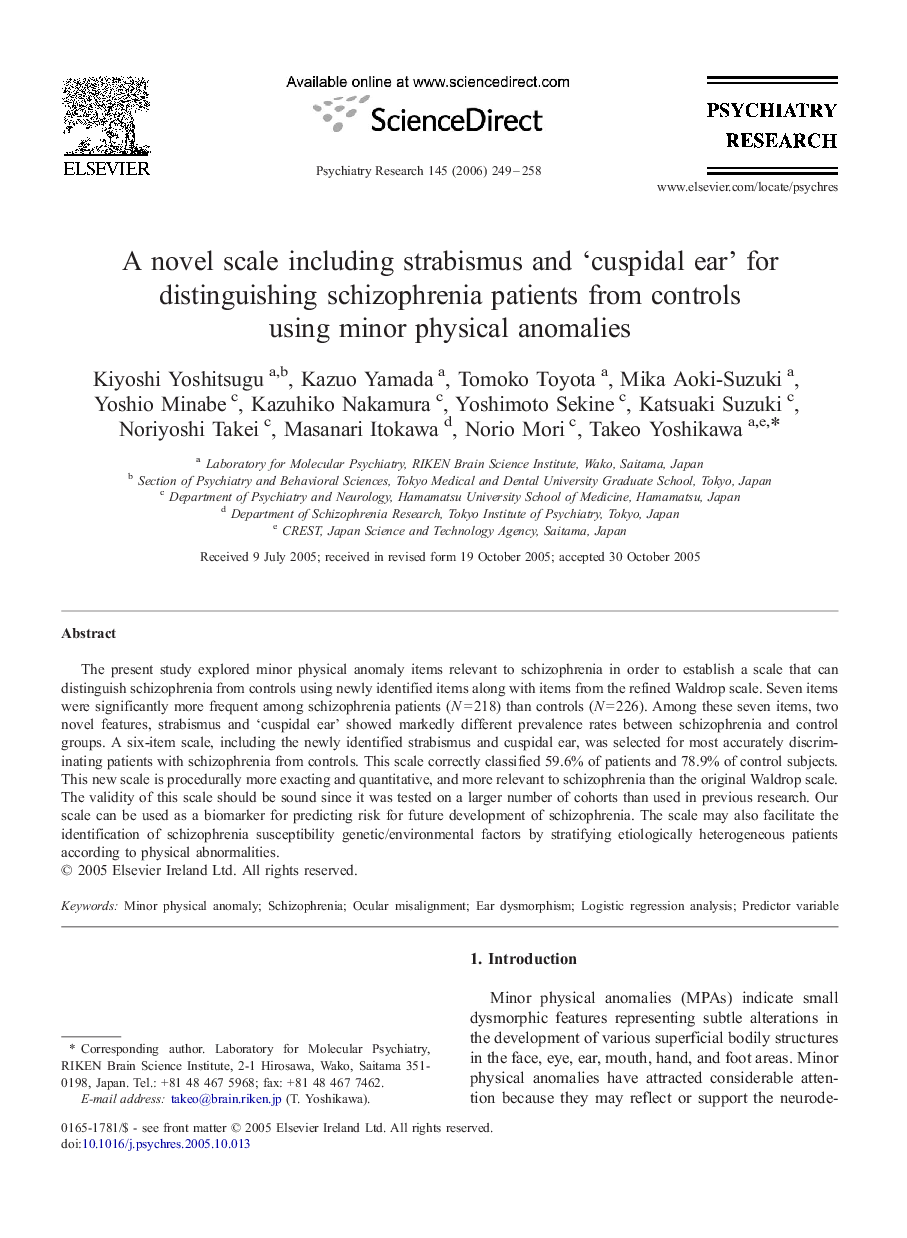| Article ID | Journal | Published Year | Pages | File Type |
|---|---|---|---|---|
| 332892 | Psychiatry Research | 2006 | 10 Pages |
The present study explored minor physical anomaly items relevant to schizophrenia in order to establish a scale that can distinguish schizophrenia from controls using newly identified items along with items from the refined Waldrop scale. Seven items were significantly more frequent among schizophrenia patients (N = 218) than controls (N = 226). Among these seven items, two novel features, strabismus and ‘cuspidal ear’ showed markedly different prevalence rates between schizophrenia and control groups. A six-item scale, including the newly identified strabismus and cuspidal ear, was selected for most accurately discriminating patients with schizophrenia from controls. This scale correctly classified 59.6% of patients and 78.9% of control subjects. This new scale is procedurally more exacting and quantitative, and more relevant to schizophrenia than the original Waldrop scale. The validity of this scale should be sound since it was tested on a larger number of cohorts than used in previous research. Our scale can be used as a biomarker for predicting risk for future development of schizophrenia. The scale may also facilitate the identification of schizophrenia susceptibility genetic/environmental factors by stratifying etiologically heterogeneous patients according to physical abnormalities.
